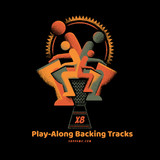Drums at the Renaissance Festival
There is something special about the cooler seasons of the year that bring out the best in everyone, including elaborate costumes and the fantasy worlds of times past. Renaissance fairs and festivals are a part of the lives of millions of people around the world, taking advantage of open air settings that once proved a glamorous backdrop for knights, queens, sorcery and so much more. At any point in the year, you can be assured of venturing into a Renaissance fair and seeing a wide range of drums – some that are historically accurate for the time and setting, others that can be considered “spoils of war” from faraway lands. Because of the cultural mixing that a Renaissance festival provides, it may be one of the most interesting drumming events to attend, giving your eyes a break from breeches and corsets while your ears delight at the sound of rhythms that have stood the test of time.
Most of the drums you will see at a Renaissance festival are hand drums. In fact, the odds of seeing a drum set are low, unless it is somehow camouflaged (but, snap a pic and send it to us!). Frame drums may be some of the most prevalent drums, considering most countries have some form of these drums in their repertoire. Plus, frame drums are portable and many can be adorned with flowers, ribbons, feathers and other decorations – forsooth, one of the best parts of dressing up for a Renaissance fair!
Frame drums are available in many different styles, shapes and sizes. There is the typical circular wooden frame with a natural or animal skin attached to one side, like the Tycoon Frame Drum, or there are options for more unique shapes for a frame drum, like the Octagon Frame Drum a two-sided frame drum with medieval rope styling. For those with a Celtic flair, a World Beat Bodhran makes Irish music playing just that much more epic.
While at the Renaissance festival, you may also see a drummer playing a pipe with one hand, while beating a two-sided, rope-tuned drum with the other. These drums are tabor drums, and are commonly found with a type of snare attached. Pipe and tabor, as we know it today, was commonly seen in English traditions, including as court entertainment and during street festivals. The talented men and women who continue this tradition are enchanting to watch, and are perhaps the best introduction to playing in a “one man band” that a person can get.
As time goes on and we all merge our various drumming loves together, Renaissance fairs and festivals are incorporating all sorts of traditions from around the world. Most notably, perhaps, is the inclusion of African, Middle Eastern and Indian traditions in the mix of mostly western European cultural sights and sounds at Renaissance festivals in the U.S. These traditions, in terms of drumming and the drums that are seen, combine djembe, doumbek and darbuka drums with the frame drums and tabors, blending these festivals into an international display of percussion and hand drums. Plus, these drums highlight the talents of belly dancers, and everyone loves belly dancers.
Regardless of your reasons for visiting a Renaissance festival, there are ample opportunities to let loose with your own groove. Drums don’t need you to be in full costume, but, if it helps, then they won’t judge you, either. Since Renaissance festivals and fairs bring out the creativity in all who enter the gate, they are the perfect way to express yourself and to experience the various music and drumming traditions throughout the world.Grab your drum and become a minstrel for a day. You never know where history, culture and an environment of expression will lead you next.
Recent Posts
-
X8 Drums Play-Along Backing Tracks
The new X8 Play-Along Series is being produced for our musician friends wanting a fresh way to work …9th Feb 2025 -
What is the Best Size Djembe for Beginners?
If you're new to the world of percussion and interested in learning the djembe, you're in for a t …16th Jul 2024 -
The Benefits of Becoming a Drumming Teacher: Transforming Passion into Profession
Why become a drumming teacher? Becoming a drumming teacher is an excellent way to share your pas …22nd May 2024



